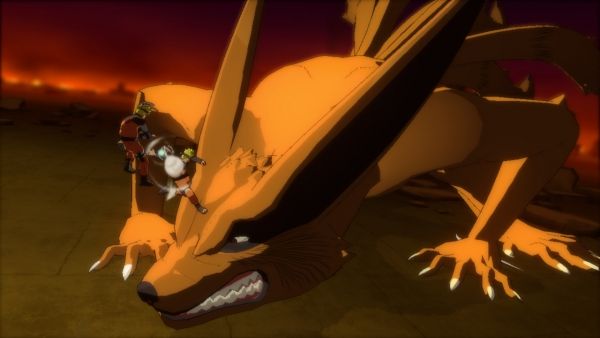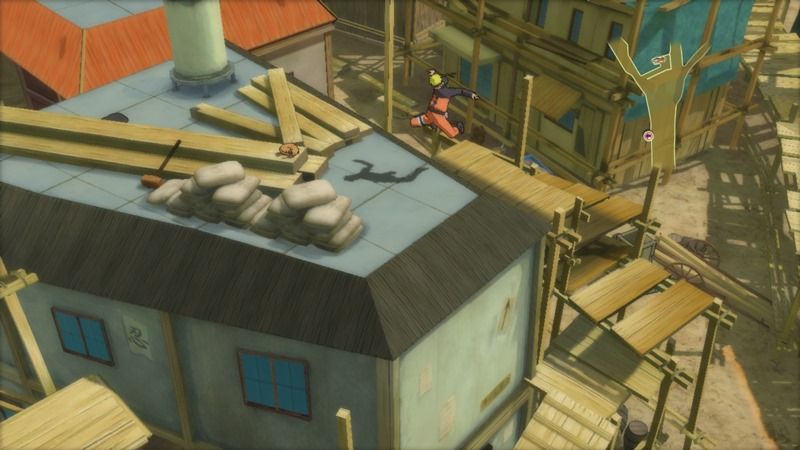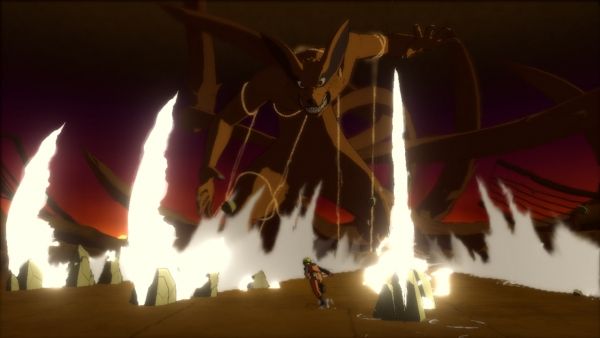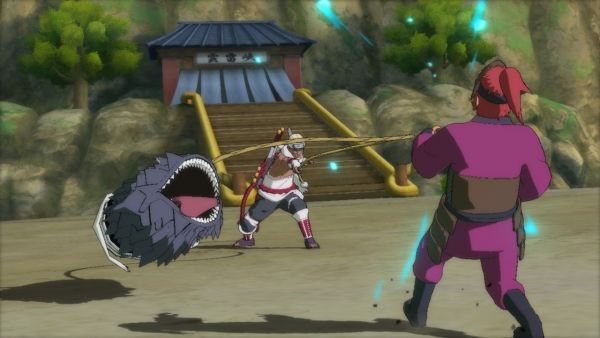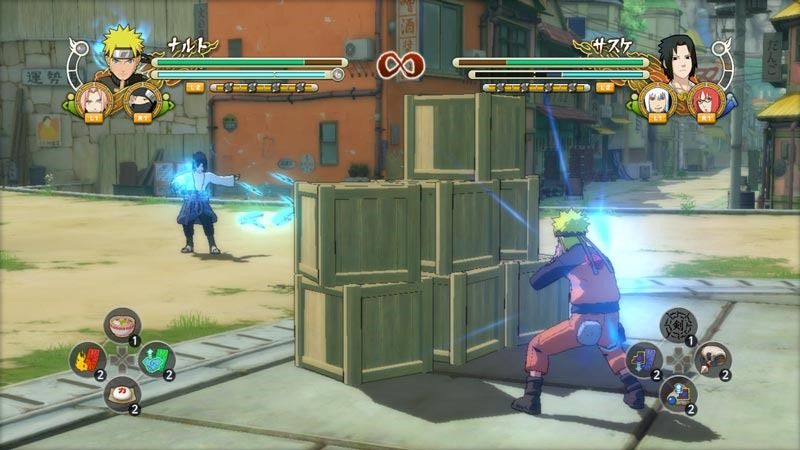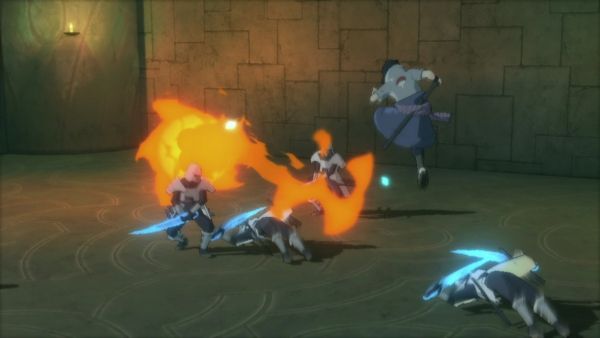When it comes to adapting anime for video games, CyberConnect2 has had a pretty good track record, the Naruto series among their best. The latest game, Naruto Shippuden: Ultimate Ninja Storm 3, doesn't disappoint, returning to the big, epic, cinematic fights of the previous games (which were sorely missed in Generations), and bringing even more characters and improvements along with it. Ultimate Ninja Storm 3 isn't quite perfect, but it may be the best title the series has seen so far.
For newcomers fresh to the manga or anime, fret not: while you may not completely understand the mechanics of the Naruto universe, Ultimate Ninja Storm 3 does put some effort into helping you catch up. This is no easy task: the franchise has been around for more than a decade, with more than 600 manga chapters, more than 500 anime episodes, nine movies, and hundreds of characters. But like previous games, Ultimate Ninja Storm 3 serves as a sort of Cliff Notes version of the story, distilling the narrative so that players get the main points of the story without detracting from the quality.
Before any purists go nuts, let me say that this is a good thing. CyberConnect2 has had a lot of experience with the Narutoverse, and while you may miss some neat little scenes that were created for the anime, you're not missing much. Keep in mind that most of those scenes were added to pad the story and make it longer, which the game actually avoids: you're actually getting a story more in-tune with the manga than the anime. This means more action, more narrative, and far, far less boring tree-hopping scenes.
To help catch you up, there's actually a nice, concise summary of Part 1 as the game installs, the era of the series that depicts a younger Naruto and his earlier adventures as a novice ninja. This leads into a summary of the events of Part 2, depicting an older Naruto who's come back from training three years later, up until his fight with a major enemy named Pain, which was covered in Naruto Shippuden: Ultimate Ninja Storm 2.
Ultimate Ninja Storm 3's story mode, Ultimate Adventure, picks up directly after the fight with Pain, with Naruto a hero of the Leaf Village, and who's finally earned the respect of the villagers. At the same time, the dangerous organization called the Akatsuki, who were previously thought to be led by Pain, ramp up their efforts to steal power, which leads to a huge shinobi world war. The true leader of this group, the so-called Madara Uchiha, has inexplicably come from the past with big plans: plans that tie into Naruto's origins and the events that led him to where he is now. You'll find that watching and playing Ultimate Adventure will feel as close to watching the anime as a game can get, with a well adapted story, beautiful 3D cel-shaded visuals, and nice little touches to the presentation reminiscent of CyberConnect2's other cinematic action title, Asura's Wrath.
Let me say this now: when it comes to the story, Ultimate Ninja Storm 3 is no Generations. Where Generations felt like less of a sequel and more of an expansion, there is no skeleton of narrative here. Ultimate Ninja Storm 3's Ultimate Adventure once again offers an explorable world that allows you to take on missions, sidequests, talk to other characters, and find items for battles. What Ultimate Ninja Storm 3 improves upon is the depth of Ultimate Adventure. In UNS2, players were given such a huge map to explore, so many items to find, and so many missions and events to take on, that it was overwhelming. Often, the missions were tedious "collect them all!" quests, which seemed to be more for padding (artificially lengthening the game) and less for genuine content. Ultimate Ninja Storm 3 cuts out a lot of the needless walking, collecting, and backtracking to find items, and instead offers more action and content in its stead.
The balance isn't perfect: at the start of the game, there's an illusion of freedom that soon gets confusingly taken away. Missions, friend events, and exploring are all encouraged, but are just as soon completely ignored. Most story segments allow players to walk across a few areas, usually for the sake of the narrative or for preparing for the next fight, before jumping into the next cutscene. Some of these segments are used very well: there's a few sequences where walking through an area is used to tell a story in a similar fashion to the anime. At other times, it will reveal itself as what it really is: a temporary respite from fighting.
Ultimate Adventure also has two new additions: in place of the previous "replay battle" system is the Ninja World Timeline, a mechanic which catalogues scenes in the Naruto universe, and allows you to replay old battles for better scores, to play unlocked chapters from Naruto's past, or to replay Ultimate Decisions for new results.
Ultimate Decisions is Ultimate Ninja Storm 3's way of introducing choice into the game's narrative. At key moments in the story, usually the biggest boss fights of the game, the player will be asked to choose between two decisions: a Legend action or a Hero action. The promise here is that players can experience unique content based on their decision. But, more often than not, these are arbitrary choices that simply change the difficulty of the challenge, with Legend being the harder choice and Hero the easier. Do I fight this enemy alone, or with team support? Do I take the longer route and fight an extra battle, or take the short and easy route? But there are some really great moments in the game where the Ultimate Decisions truly take unique turns, offering a completely different scene or a completely different combatant.
These Decisions are also important to your strategy, since Ultimate Ninja Storm 3 uses a new Item Palette Selection mechanic, which makes you manage both a Legend Item Palette and a Hero Item Palette. Each palette has its own set of selectable items, and each levels up independently. Winning most battles will award points to both palettes: but Ultimate Decisions award points only to that particularly chosen palette. Leveling up the palette increases the amount of item-equipable slots, the variety of items that are available to equip, and what level of items can be equipped. All that said, the system is merely a way to encourage replayability, since you're never forced to actually live with your decisions. In fact, the Ninja World Timeline quest encourages players to replay each Ultimate Decision and unlock more points, so there's really no consequence for your decisions. But the chance to win more battles, pass bonus conditions, and get more unique items is too good to pass up.
And speaking of combat, I might as well say it: unlike the story mode, Ultimate Ninja Storm 3 isn't that much different from Generations, plain and simple. But where there's a lack of innovation, there is plenty of refinement. As a veteran of the series, it's still a little depressing that there hasn't been a way to give characters more than two jutsus (besides having an alternative costume with different moves), especially since CyberConnect2's PS2-era Naruto: Ultimate Ninja series allowed for customization through equippable jutsu. Also, some of the characters featured in the trailers are not available as playable characters in the game, only enemies (like the Gold and Silver Brothers, and the Seven Ninja Swordsmen of the Mist). But again, the system is so fine-tuned that the balance, the amount of pretty unique playable characters (over 80), and the efforts to improve the the overall quality outweigh the available jutsu variety and a few missing contenders.
Just like before, players can move about the stage freely, execute jutsu attacks, use tools, escape attacks for instant counters, and call out team support for assists. For the Naruto: Ultimate Ninja Storm uninitiated, you will often play as one character, with up to two assist characters to help you. There are three types of assist roles: Attack, which attacks your enemy alongside you or in your place; Defense, where a character can come into battle to momentarily protect you or take a hit for you (at the expense of their health), and Balance, which do a little of both. When the team gauge reaches halfway, team members will begin to assist automatically, defending you while you charge your chakra, or adding hits to your combos. Once full, a player can attempt a Team Ultimate Jutsu Finisher, which can hit an enemy with all three characters' ultimate jutsu for huge damage. But wait too long, and the gauge will empty before it can be properly used.
What's changed is that--like in Generations--the Substitution Mechanic (which allows players to jump out of harm's way instantly) has been limited, with a set number of escapes before the meter needs to refill. The Awakening mechanic has also been changed to provide more variety. In old games, a character's Awakening Mode was a powered-up form that players could enter into when their health dropped too low. Most characters in Ultimate Ninja Storm 3, follow the old mechanic, especially all of the characters with other forms or transformations. All the others can now Awaken at anytime during a match, but at the expense of temporarily decreasing their Chakra bar. Both types of Awakening have up to two special attacks that take the place of their team support gauge, and some of these special attacks are as varied as simply blasting foes with fire, to erecting a monstrous stone wall to block enemies from attack.
Stages have also seen a little change, with some breakable items and obstacles thrown in for temporary barriers, and a Ring Out function that allows you to kick an enemy off of a stage. While there is no true topographical variety, all of these stages look fantastic, and really look ripped out from the anime itself.
In fact, it should come as no surprise that the game itself is truly stunning to look at. CyberConnect2 has always excelled at making the Naruto games look exactly like the anime, and Ultimate Ninja 3 is no exception. And just as before, Quick Time Events have returned, usually at the end of boss battles, and still lend an edge of urgency and tension that really completes the anime experience and helps keep the mechanic relevant. But like most QTE's, it's a bittersweet mechanic, since it occasionally distracts from the visual eye candy you're supposed to be drooling over. And boy does Ultimate Ninja Storm 3 give you some truly amazing scenes to drool over.
The biggest new addition to the series is Ultimate Adventure's Mob Battles, a sort of Ultimate Ninja Storm approach to the action genre. Most fighting games that attempt this usually fail, and fail horribly (I'm looking at you, Tekken 4, 5, and 6). But here, with the way the Ultimate Ninja Storm battle system is been designed, it actually works pretty well. You won't usually find anything truly groundbreaking here: characters take on small groups of enemies until they finish the stage, making it feel like a pretty version of God of War meets Dynasty Warriors. But there are some boss battles that were equally challenging and fun, and the Mob Battles do feel like they were designed with care, for what they're worth.
But not all of Ultimate Ninja Storm 3 has improved. Expect loading, and lots of it. And then expect some more. It could be worse, and the game accomplishes a lot with what it does, but it can get annoying, even distracting at some parts of the story. Just imagine the game loading to feature a dialogue, loading again to let you explore, and then a screen or two later you load again for a cutscene. It's frustrating.
And speaking of cutscenes, expect plenty of scenes where the lip-syncing isn't really synced at all. It's no surprise that the game was developed around the Japanese voice track, but it often leads to dialogue that ends early, and a jaw that keeps moving for another ten seconds of silence before moving on. Having grown up on kung-fu flicks, this isn't a major gripe, but a persistent and annoying one. Plus, it gives Japanese voice track purists a reason to say they're right.
Sometimes the fixed cameras of the Ultimate Adventure mode lead to old school design flaws. Like in one area of the Leaf village, where I pressed up to enter a new area, only to find that this new area had the camera facing Naruto's front instead of his back. Because I was still holding up as I entered this new area, it led to Naruto returning back to the area he was just in. Had I continued to hold the up button, I could have tortured my virtual Naruto in a perpetual loop; a limbo where he's always going somewhere but never going anywhere for all eternity. Or until my controller died. Thankfully, I'm not completely willing to drive myself insane, and thankfully, this game's flaws are not deep enough to mar such a gorgeous and refined experience that really takes itself seriously and respects the Naruto franchise.
Like I said above, a game this far into the series could easily frighten a newcomer just as much its trying to welcome them in. And Naruto Shippuden: Ultimate Ninja Storm 3 will definitely be easier to pick up and play for veterans and diehard fans of the series than strangers to the series. But novices and veterans alike will both enjoy and appreciate the effort that channels the franchise so well, and will definitely feel satisfied until the next Ultimate Ninja Storm comes out. This is a good step for the series, a sign that the series is still evolving, and as good a reason as ever to jump back into the franchise if you've been missing it.
Believe it.

